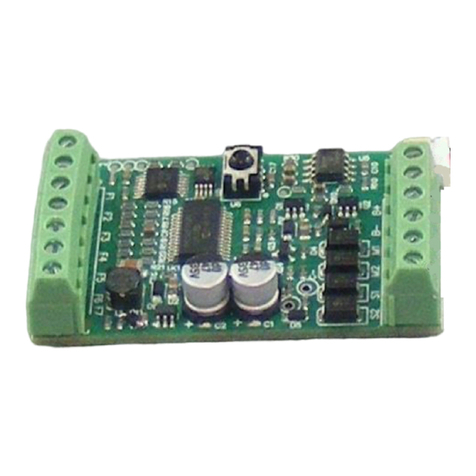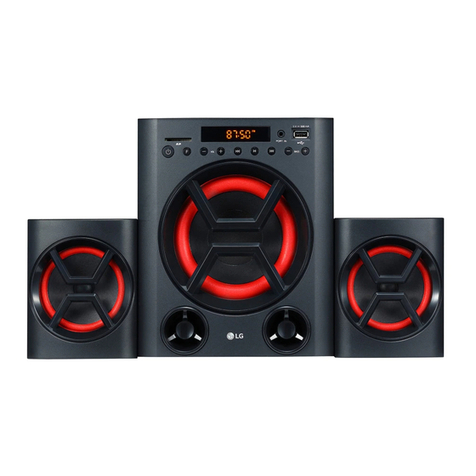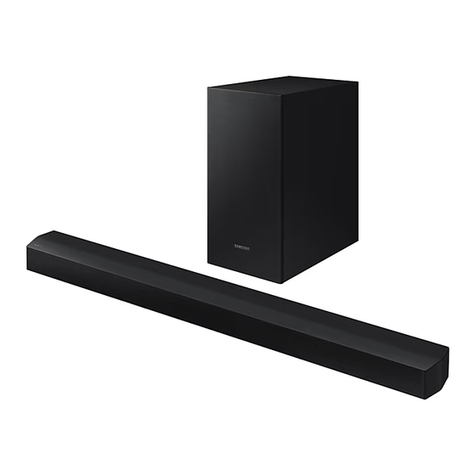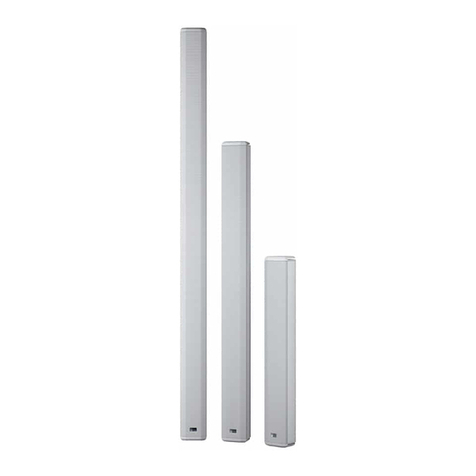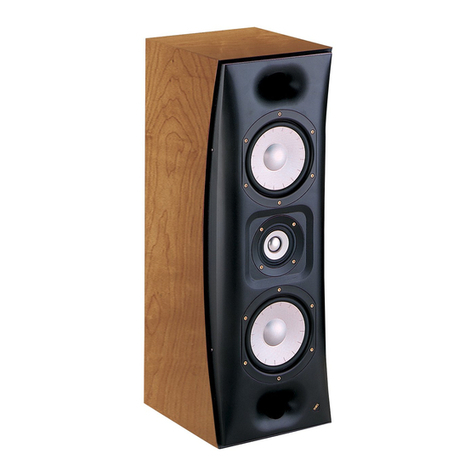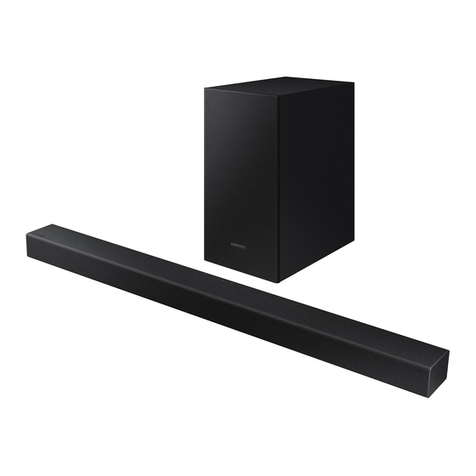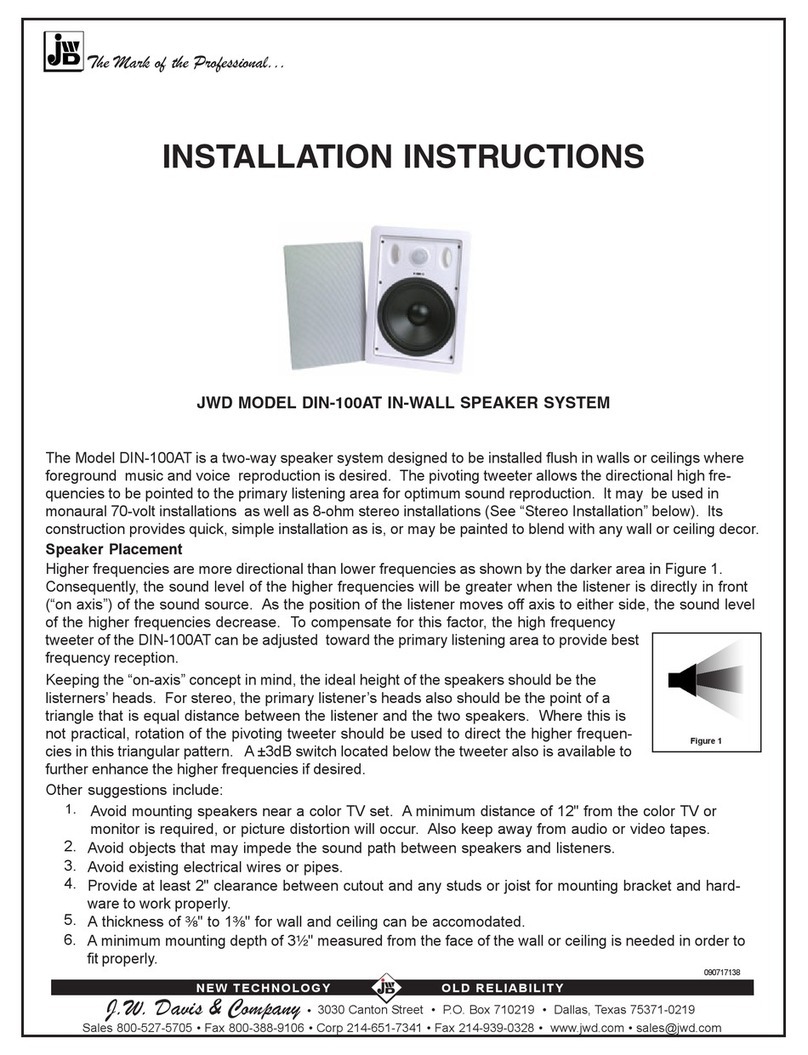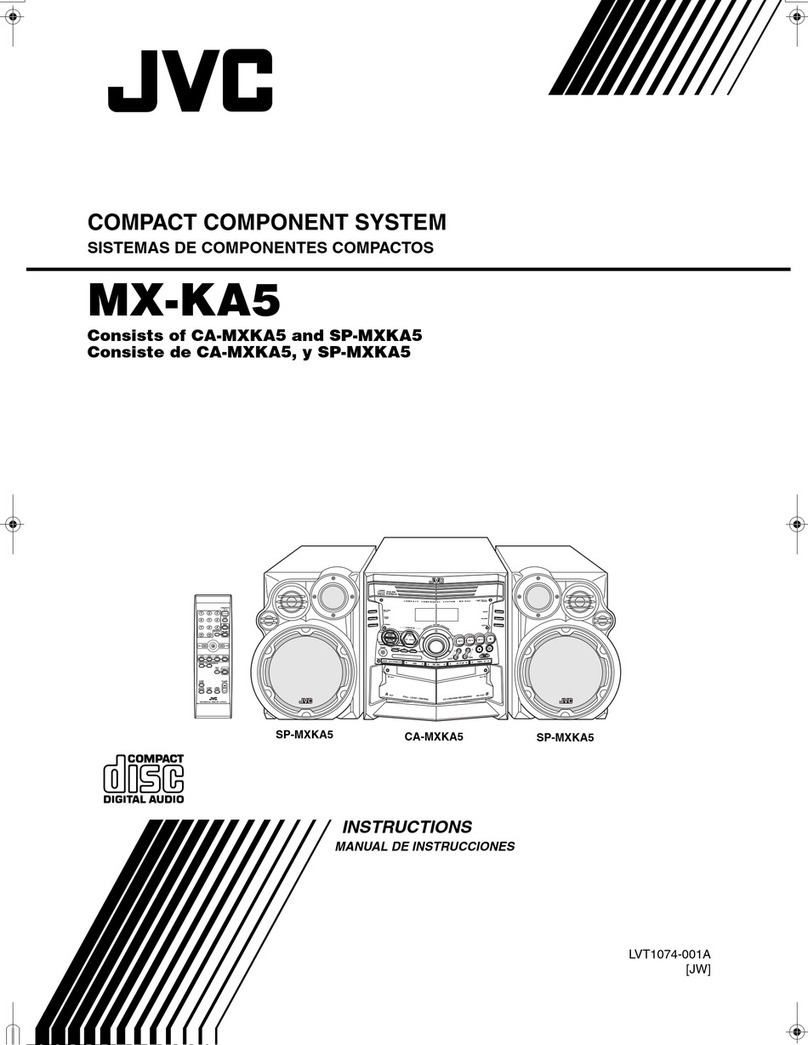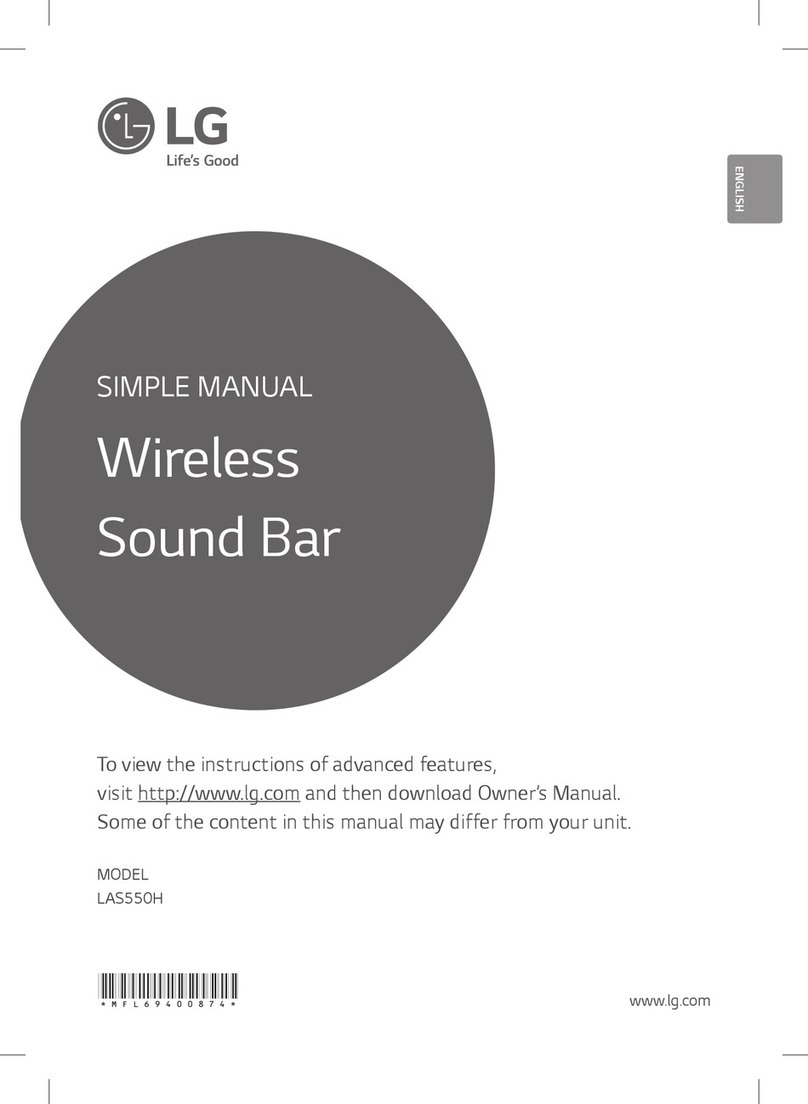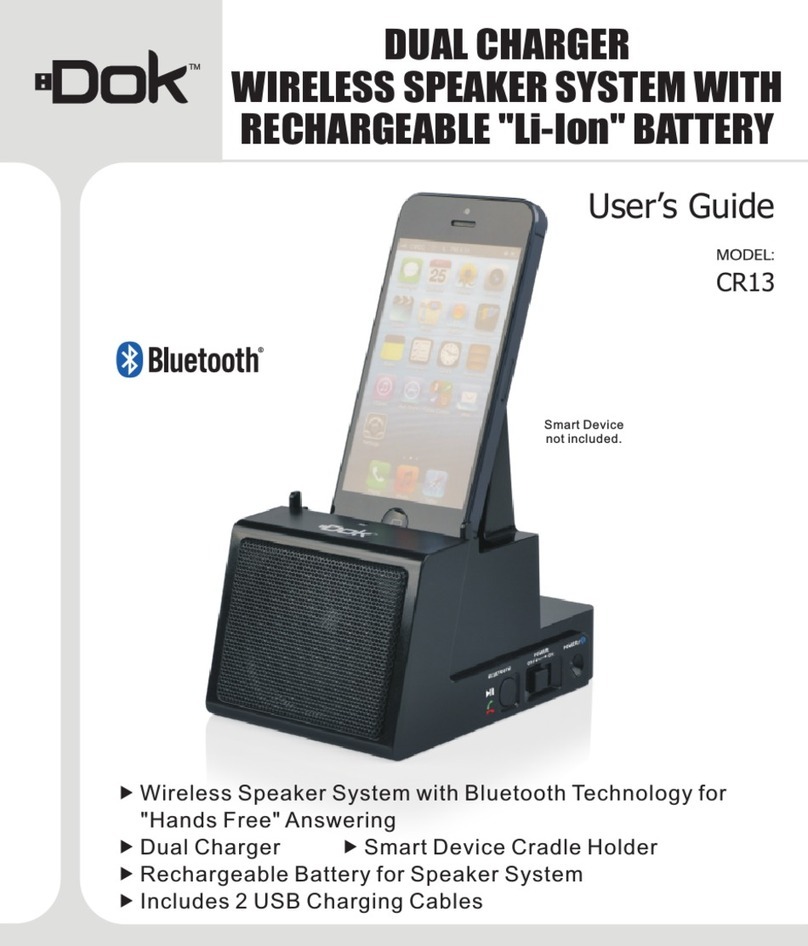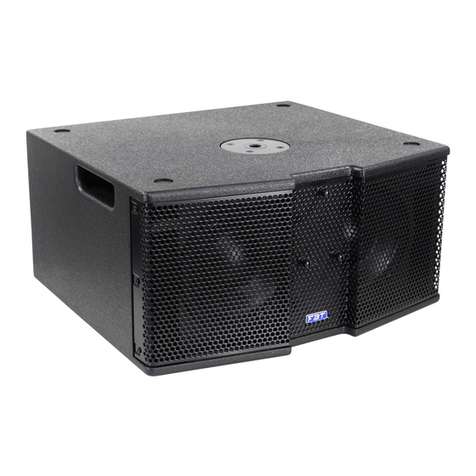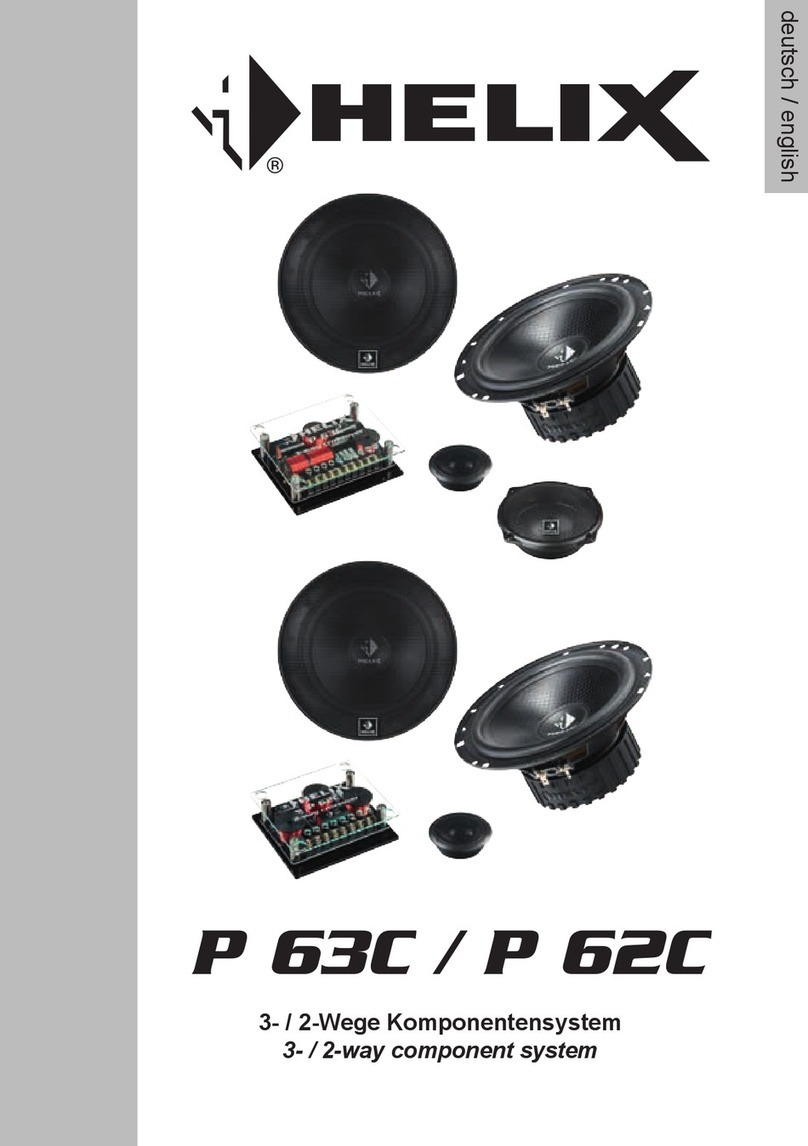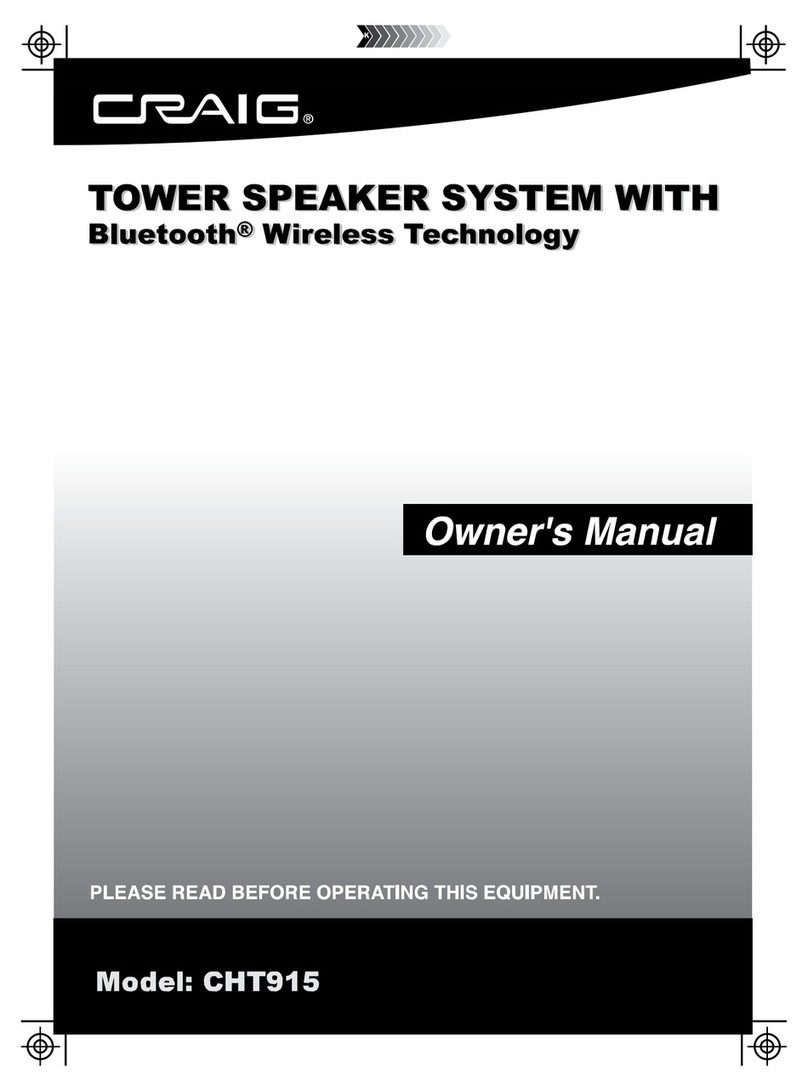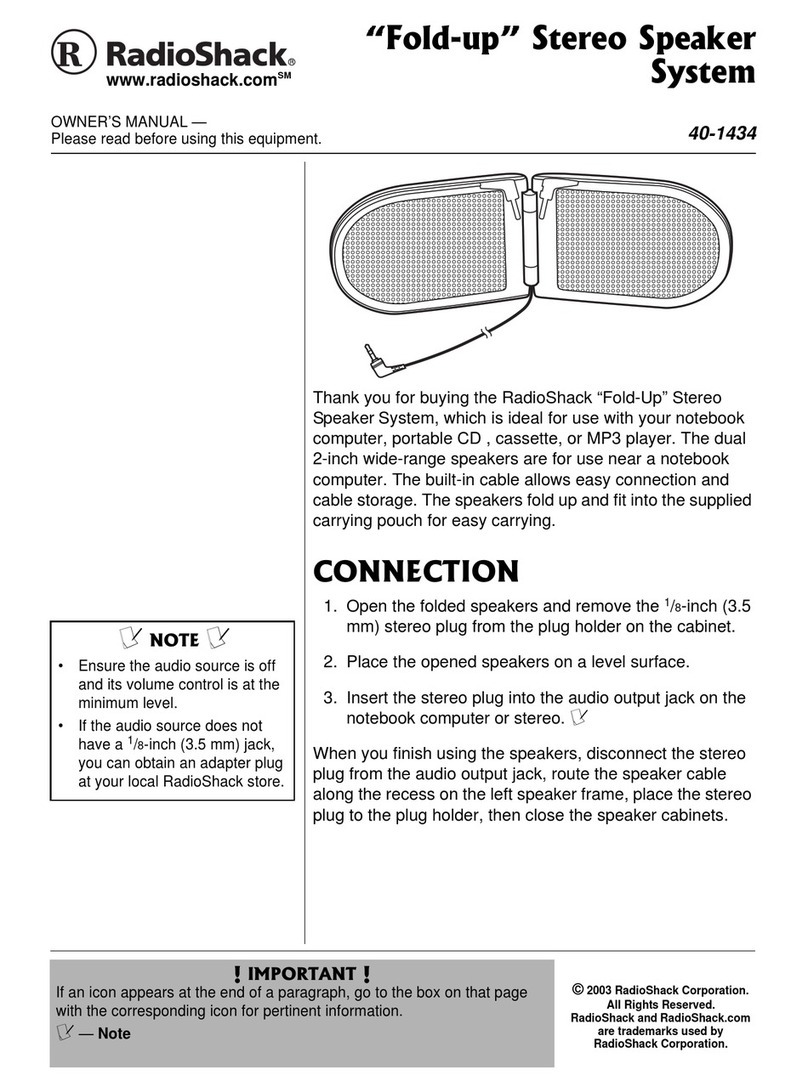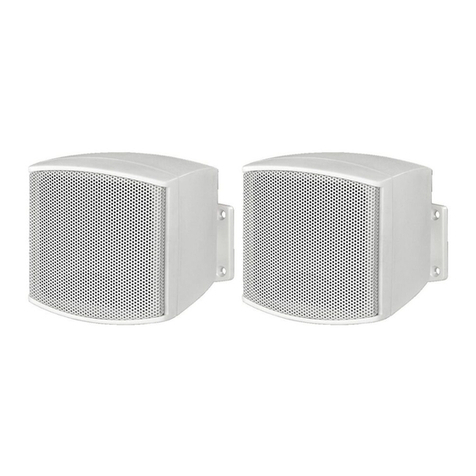MyLocoSound Blue User manual

1

2
ELECTRIC MYLOCOSOUND 16E MAR 1ST 2019
UNIVERSAL SOUND FOR LARGESCALE, ELECTRIC OUTLINE LOCOMOTIVES.
OVERVIEW
Easy installation using screw terminals with no soldering.
Uses a TV remote control to adjust the sounds to match the prototype loco.
Provides seven selectable engine sounds which adjust to match the loco speed and load.
Selectable engine start up. Seven single and dual tone horns with adjustable pitch to suit the loco.
Full remote control of the horn, bell, airbrake, guard’s whistle and optional turbocharger.
Optional brake squeal.
For track powered DC or battery powered radio controlled railways.
Measures 55mm x 33mm x 11mm.
CONTENTS
The soundcard will operate with any Sony™TV remote
control using the buttons described in this section. It will also
operate with any universal remote control when it is set to
Sony coding. They can be purchased from your local
consumer electronics store, Kmart, Good Guys, etc. for less
than $20. You will probably find a number of codes listed for
Sony and will need to try each one until you get to the code
which operates the soundcard volume, mute and function
buttons correctly.
The remote control shown here is the Home & Co which, at
the time of printing, is $12 from Kmart. To program it, hold
the Power & TV buttons together until the TV button light
goes out. Then set the code 0140 and then press the Power button again to set the code.
Please ensure that your chosen remote control has batteries installed and follow the instructions which
come with it to set the coding.
Note that the buttons on the remote control auto-repeat if held down. If you want a single event to occur,
like turning on the safety valve, then press the safety valve and release it immediately. If you want to
make a large change in volume or tone then you can hold the button down to avoid the need to press the
button repeatedly.
The Mute button will start and stop the engine.

3
SPEAKERS AND SOUND QUALITY
The soundcard requires an 8 ohm loudspeaker which is not included. A 4 ohm speaker can also be used but
you may cause the soundcard to overheat and temporarily shut down if the volume is very high
and the soundcard is in a confined space. Your choice of speaker is highly important because it
determines the quality of the sound produced. A power output of at least one watt is
recommended.
The lowest cost option is to fit speaker from your local consumer electronics store. Typically
these come in 27mm or 57mm diameters. Use the largest, which you can fit in your loco.
For a better quality sound and more volume, the speaker needs to be
baffled. That means that it needs to be built into the front face of an airtight
box so that sound is heard only from the front of the speaker and none from
the back. The plastic top of a spray paint can is good for making a baffle as
shown in the diagram.
A good solution, which ensures high quality sound with lots of deep throbbing
bass, is to purchase an 8 ohm impedance external speaker unit for iPod and MP3
music players and remove the two speaker modules, in their enclosures, for use
in two locos. These are readily available at consumer electronics stores.
Speakers can be connected to the terminals either way around.
It is also possible to boost the volume by using a commercial stereo amplifier.
Section 11 of these instructions shows how this can be done. Use of an external
amplifier is recommended for ride on railways.
THE REMOTE CONTROL
The soundcard will operate with any Sony™TV
remote control using the buttons described in
this section. It will also operate with any
universal remote control when it is set to Sony
coding. They can be purchased from your local
consumer electronics store, Kmart, Good Guys,
etc. for less than $20. You will probably find a
number of codes listed for Sony and will need
to try each one until you get to the code which
operates the soundcard volume, mute and
function buttons correctly. The remote control
shown here is the Audiosonic which, at the
time of printing, is $12 from Kmart and should
be set to the code 0188.
Please ensure that your chosen remote control
has batteries installed and follow the
instructions that come with it to set the coding.
Note that the buttons on the remote control auto-repeat if held down. If you want a single event to occur,
like turning on the safety valve, then press the safety valve and release it immediately. If you want to make
a large change in volume or tone then you can hold the button down to avoid the need to press the button
repeatedly.
The Mute button will start and stop the engine.

4
THE INFRA-RED RECEIVERS
The infra-red receivers accept commands from the handheld remote control to adjust or trigger sounds. Two
receivers are provided. One is fixed in the middle of the soundcard. The other is on a flying lead which plugs
into the small white socket as shown on page one.
In some installations, the soundcard is visible when installed in the loco. This usually occurs when the
soundcard is mounted on the floor of a cab, with or without windows. In this case, the remote control can
be pointed directly at the soundcard and the on-board receiver is all that is needed.
If the soundcard is within the loco and is not visible then the flying lead needs to be used. Plug it into the
white socket and glue the black receiver, round side outwards, to any external surface of the loco to which
you can easily point the radio control. Do not paint the receiver.
INSTALLING THE SOUNDCARD IN A TRACK POWERED ELECTRIC LOCOMOTIVE OR RAILCAR
The soundcard is suitable for use on analogue DC track powered railways. It is not suitable for use with DCC.
When the track voltage is below nine volts it is insufficient to power the soundcard. Therefore a nine volt
PP3 battery is used to drive the soundcard and produce sound when the loco is static or moving slowly. This
battery will be automatically recharged whenever the track voltage is at least one volt higher than the battery
voltage so there should never be a need to remove the battery for recharging. However, the battery must
be a Nickel Metal Hydride type; Lithium & Nickel Cadmium batteries must not be used. On small shunting
layouts, the loco speed is often not high enough for charging to take place. Some owners of shunting layouts
put an isolation switch on the loco motor circuit so that they can turn up the power to recharge the battery
without having the loco moving. On layouts which have pure DC controllers, (as opposed to PWM
controllers) you may need to give the throttle a bit of a tweak to start the sound. On those layouts, the
sound will automatically turn off after one minute of inactivity and another tweak will turn it back on. With
the more common PWM controllers the sound will turn on automatically and stay on.
When the loco is removed from the track the soundcard will go into a “sleep” mode to preserve the battery
charge. A fully charged PP3 battery should retain charge for over a year.
Because most DC controllers do not have function buttons, an alternative way of triggering the horn, bell
and other sounds needs to be found. The options are:
1. You can set the horn to sound automatically three times a minute when the train is running. Page # 9.
2. You can connect the soundcard horn trigger to a reed switch which you mount on the bottom of the loco.
Then install magnets in the track where you want the horn to sound eg. at the approaches to a level crossing.
The horn will then sound briefly as the loco crosses each magnet.
3. Use the remote control, supplied with the soundcard, to trigger all the sounds as described in section 6.
However, infra-red remote controls are not designed for long distance use outside. On an overcast but bright
day, the remote control, powered by AA or AAA batteries will probably operate up to three metres away.
Any combination, or all, of these methods can be used.

5
INSTALLING THE SOUNDCARD IN A BATTERY POWERED ELECTRIC LOCOMOTIVE OR RAILCAR
The wiring diagram below shows a typical installation for common types of battery powered radio control
systems such as a VIPER ESC. You can use current RCS Tx handpiece including the RCS # EVO-BATT.
The Rx102-1 receiver not shown here, has three function channels, two of which, Ch # 2 & Ch # 4 can each
operate two triggers via two R/C switcher units. The fifth soundcard trigger, the turbocharger, can be
operated by adding a third R/C switch to Ch # 5. Or switched on to automatic by the IR remote control.
N.B. The # EVO-BATT can only trigger three sounds max. The TX-7k has five sound triggers.
The wiring diagram below shows a typical installation for an RCS Omega radio control systems with the
current model TX-3 transmitter handpiece.
This combination has two function channels, each of which can operate a sound trigger. In the above case,
the Whistle/Horn & Bell triggers have been selected. The Omega should be programmed to make the Horn
channel momentary and the bell toggle. You can choose to use different channels.
There are options available to use
more triggers. RCS can help you with
this.
The Tx7k has 4 x sound triggers & can
be operated as shown here:

6
INSTALLING THE SOUNDCARD IN A CREST REVO BATTERY POWERED LOCOMOTIVE OR RAILCAR.
The Crest Revolution can trigger all six sound functions and is connected as shown in the diagram below. To
connect the Crest Revolution, the adaptor plug for custom installations is used with the outer red, orange,
grey and black wires being connected as shown. All auxiliary functions should be set to momentary by
selecting MENU –ASSIGN FUNCTIONS –AUX FUNC SETUP. However, the bell, if in use, can be set to latch.
The wiring diagram below shows the connections for the DC jumper board in a Bachmann locomotive.
The above wiring diagrams can be seen in colour by visiting the web site at www.mylocosound.com\installs.
Also shown are specific wiring diagrams for RCS, Barker, Mac 5, RailBoss, Mtronics, Roundhouse, Electronise
and LocoLinc.

7
CONFIGURING THE SOUNDCARD
Configuring this new BLUE v16 pcb card is a lot different from all of the earlier versions including V15.
It has two modes.
Setting Mode in which you can select the sounds you wish to make adjustments to.
Run Mode in which the soundcard does its job on your railway.
All changes to the settings must be made using the Sony Compatible IR hand piece. We will cover that first.
1. Turn the soundcard ON and place into Setting Mode by pointing the IR remote Controller or the remote
receiver on the end of the flying lead, and press the MUTE button. The LED on the soundcard will blink slowly
and all sounds swill cease.
2. Select the sound you wish to configure by pressing the relevant key on the remote control to change the
sounds listed below. When you press a key, the LED on the soundcard will start blinking faster. At any time
you can press the MUTE button to hear the sound you have selected. Then press the MUTE again to turn
the sound off so further programming can proceed.
The options are as follows. Remember, the MUTE button must be pressed first to start programming.
Power Button –Battery or Track Power.
The soundcard can be used with battery powered, radio controlled locomotives or with locomotives which
are powered from the track (but not DCC). Press this button to change from one to the other.
1 x Beep Battery powered radio control.
2 x Beeps Track Power. In this case, the soundcard will automatically turn itself off when the locomotive
has not moved for 30 seconds. Turning the track power up a little will turn the soundcard back on.
BUTTON # 0 Which Country.
This is used to select the part of the World from which your locomotive is a prototype. Your choice at this
step will determine the selection of whistles offered and how those whistles are sounded. When you press
the 0button, one or more beeps will be heard to indicate the country currently selected as follows.
1 x Beep Britain
2 x Beeps North America.
3 x Beeps Australasia.
Press the 0button repeatedly to select the region you want. The sole purpose of changing the country is to
select default whistles and sounds which are appropriate. If you want to use a whistle from another country
because it fits your particular locomotive, there is no problem changing the country to access that whistle.
Button 1 Horn. This is used to select the style of horn, which suits your locomotive. Every one of these
horns has an adjustable pitch and volume. Each time you press the 1 button the number of beeps will
increase to indicate that the horn listed below has been selected. If you wish to hear that horn, press the
Mute button on the remote control and then button 1 to start the horn and then again to stop it. While the
horn is sounding, you can use the channel up/down buttons to vary the pitch and also the volume buttons.
The pre-selected horns available are:
Beeps Horn
1British Two Tone automatic (British default)
2British Two Tone manual Play tunes using buttons 1 and 2.
3Generic single tone (Other default)
4High pitch horn
5Lower pitch horn

8
Button 2 Bell. This button is used to select the type of bell from the list below.
1 beep Manual bell. When the button is pressed, rings continuously until the button is pressed again.
2 beeps Timed bell. When F2 is triggered, rings repeatedly for a predetermined time. To set that time,
press the Mute button to exit setting mode and then press Button 2 to ring the bell. When the bell has rung
for as long as you want, press Button 2 again to stop the ringing. The time is then set and the bell will ring
for that time when F2 is triggered while running.
3 beeps Automatic bell. Rings repeatedly when the motor voltage is under 4 volts. (US Default)
4 beeps Automatic bell. Rings repeatedly when the motor voltage is less than 8 volts.
5 beeps Automatic bell. Rings repeatedly when the motor voltage is less than 12 volts.
6 beeps Manual bell. Rings once only each time the button is pressed. (Australasian Default)
7 beeps Bell not required. Button sounds a reversed tone horn. (British Default)
Button 3 Guard. This button is used to select the guard’s sounds from the list below.
1 beep Sounds a guard’s Acme Thunderer whistle. (British Default)
2 beeps Sounds “All aboard”. (US Default)
3 beeps Sounds “All aboard” and then the guard’s whistle. (Australasian Default)
Button 4 Brakes. This gives you three braking options:
1 beep No braking sounds required. (Default)
2 beeps Automatic brake squeal whenever the locomotive comes to a halt.
3 beeps Automatic brake squeal whenever the locomotive comes to a halt plus automatic airbrake
release when moving off.
Button 5 Door slam.
A British Southern Electric door slam sounds each time button # 5 is pressed.
Button 7 Compressor.
1 beep There is no compressor sound when loco is stationary. (Default)
2 beeps Automatic. A British Southern Electric compressor will run automatically when the loco is
stationary
3 beep Automatic. A British Metropolitan Vickers will run automatically when the loco is stationary.vs
up to notch 8 to move off with revs three times tickover.
Button 8 Engine Type. There are four alternative motor sounds.
1 beep Motor Hum 1 which increases the pitch proportionally to the speed.
2 beeps Motor Hum 2 which increases the pitch proportionally to the speed.
3 beeps Motor Hum 3 which increases the pitch proportionally to the speed.
4 beeps Siemens Taurus loco with its own “musical” start

9
Button 9 The Operating Mode. There are three operating modes available:
1 beep Indicates manual mode. In this mode all sounds are triggered according to the above settings. The
whistle will sound for as long as its button is pressed.
2 beeps Indicates simple automatic mode. This is designed for controllers which have no function
buttons, as is often the case with track power, or at exhibitions, etc. where you don’t want to operate
manually. The whistle will sound once automatically when the loco moves off and then once more three
times a minute when the loco is on motion. A reed switch can be placed under the loco and be connected
to the F1 terminal to make the whistle sound when the loco passes over a magnet. Another reed switch,
connected to the F2 terminal, can be used to trigger the bell which will turn on when crossing a magnet and
then off at the next magnet.
3 beeps Indicates American automatic mode. Again, this is designed for controllers which have no
function buttons, as is often the case with track power, or at exhibitions, etc, where you don’t want to
operate manually. However, it follows American rules.
The whistle will sound two long toots when the loco moves off forwards or three short when backing up. If
these occur the wrong way around then reverse the leads at the M1/M2 terminals. When the loco stops, a
single short toot will indicate brakes on. A reed switch can be placed under the loco and be connected to
the F1 terminal to make the whistle sound the grade crossing sequence when the loco passes over a magnet.
Setting the motor tone. You should hear the motor. If not then press the Mute button to switch on the
sound. Use the channel up/down buttons to set the motor tone to the desired starting level and the volume
up/down buttons to set the volume. The volume will increase markedly when the loco moves off.
Setting the engine start voltage. Turn up the controller to the point where you want the motor volume to
start increasing. Then press the Power button to set that start point. Further increases in power should
cause the motor to speed up.
Channel up/down buttons –Load Sensitivity. The soundcard can be programmed to make the engine loud
when accelerating and softer when coasting and slowing down. The channel up/down buttons change the
level of sensitivity as indicated by the number of beeps when pressed.
One beep indicates maximum sensitivity.
Five beeps sets minimum sensitivity ie. the engine will be loud all the time.
The default sensitivity is two. Change to one if you want more sensitivity or three or more if the engine roar
sounds erratic.
Resetting the soundcard back to factory default settings. If you get in a bit of mess and want to start again
then you can reset the soundcard by holding down the 0 (zero) button of the remote control for three
seconds. You will then hear five beeps and all settings will revert to the defaults for the country you have
selected. These include the default sounds, 2/4 cylinders and a voltage controlled chuff. It will not change
the country.
You can change these settings whenever you wish and those changes will be effective immediately.
OPERATING THE SOUND CARD
When the loco is running, the engine sounds should operate automatically, getting louder when accelerating
and softer when slowing down or idle.
Where your controller has function buttons then you can use them as follows:
Button 1. Sounds the main horn.
Button 2. Operates the bell or the British horn 2.
Button 3. Sounds “All aboard” in the US version or the guard’s whistle elsewhere.
Button 4. Sounds the airbrake release.
Button 5. Slams a door.

10
TROUBLE SHOOTING GUIDE
The Remote Control won’t work.
Start the soundcard, press any button on the remote control and the LED should flash. If it does not flash
then the battery probably needs replacing. If the LED flashes but the soundcard does not respond then the
Sony™coding may have been lost and can be reset as follows.
If using a MyLocoSound remote control. Switch on the van or loco so that you get the steam hiss. Point the
remote control at the receiver and do the following:
Hold the mute button down. The remote control will go through its list of codes until it gets to the correct
one at which time the sound will go off. When that happens, let go of the mute button immediately. The
correct code should now be selected. Test the remote by pressing the mute button again to turn on the
sound & then test the functions. It may not work & you may have to try several times. Releasing the button
immediately when the sound stops is critical.
If using a locally purchased remote control. Refer to its instructions for resetting the Sony coding. You will
probably find a number of codes listed for Sony and will need to try each one until you get to the code which
operates the soundcard volume, mute and function buttons correctly.
The code for K Mart Home & CO IR remote controls is 0140.
If the remote control still does nothing then the problem may be the infra-red receiver on the loco which
must not be painted or obstructed.
I get no sound at low speeds when using trackpower.
You may get no sound at low speeds until the track voltage gets up to about nine volts. This indicates that
the support battery is flat. Charge the battery by running the loco at half speed for ten minutes.
I get no sound at all.
Press the Mute button on the remote control in case the sound has been accidentally turned off.
Switch the loco off and then on again. When the soundcard starts, the LED should flash once. If not then
use a multimeter to check that there is at least nine volts at the B+ and B- terminals. If not then check your
wiring in case something has come adrift. Check that the speaker is connected correctly.
The soundcard makes a clicking noise or shuts down.
This most often occurs when the horn is sounded. It is caused by the soundcard restarting because there is
insufficient voltage in the track or the battery to sustain the volume setting. Recharge the battery.
When installed in a loco, the loco and sound stop intermittently and I have to reset the controller to get it
going again.
The soundcard maximum output is 1.5 amps. If this is exceeded as a result of a short circuit, a heavy load
and/or high volume settings then the soundcard will shut down. Also, if the soundcard is installed in a very
confined space and is run for a prolonged period at high power, then it can overheat and switch itself off
while it cools down.
The sound is erratic (for trackpower only, not radio control).
When using track power, some controllers have an output which is so rough as to cause the soundcard to
run erratically. This can be cured by fitting a 220µF bi-polar capacitor across the M1/M2 terminals to smooth
the DC pulses. The capacitor rating needs to be at least 30 volts to ensure that it is more than the maximum
voltage of the controller. A bi-polar capacitor is one which can be connected either way around.
My radio control has become erratic.
If the soundcard is installed very close to the loco radio receiver ie, back to back, then it can interfere with
the radio commands and operation can become erratic. To avoid this problem move the soundcard a little
away from the receiver. You can also avoid the problem by wrapping the soundcard in silver paper but would
have to be very careful to avoid shorts and component overheating.

11
USING AN EXTERNAL AMPLIFIER FOR RIDE ON RAILWAY LOCOMOTIVES
When used in 5 inch and 7¼ inch ride on railways there is a lot of environmental noise. The one watt output
of the soundcard is not sufficient for these environments and an external amplifier needs to be used. The
wiring diagram below shows how the soundcard can be interfaced to a commercial stereo amplifier in a loco
powered by a 12 V battery.
A 24v battery powered loco will require a 24v to 12v DC converter as shown alongside. Note that the
soundcard can handle a maximum of 24 volts DC. A battery which is labelled as 24 volts will typically output
28 volts when fully charged and will therefore damage the soundcard if connected directly.
In Australia, the 2x15 watt AA0487 amplifier from Jaycar is suitable. Other amplifiers may require the 100Ω
resistor to be changed. If the output volume is too low then raise the value of the 100Ω resistor. A single
speaker can be used on the right output or two speakers on the left and right outputs.
Any of the five functions can be used by means of a pushbutton between the function terminal and ground.
The sound functions available are whistle, bell, guard’s whistle, safety valve and brake pump.
The installation can be made more robust by using two blobs of silicon to attach the soundcard to a plastic
box in which the capacitor and two resistors are placed as shown above. The whole can then be fixed to the
top of the amplifier, again using silicon.
Select a speaker which matches the impedance and power output of the amplifier. In the case of the Jaycar
AA0487 a 15 watt speaker of four ohms impedance is needed. It is also important to make a soundbox which
is an airtight fit to the back of the speaker. This will improve both volume and sound quality.
PLC009 Diesel Instructions Australia.doc 08/12/17 Version 16
For more information, please visit the web site at www.mylocosound.com or e-mail
Copyright © 2013-7 MyLocoSound Pty. Ltd.

12
Remote Control
Radio Control
Power
Set Start Voltage for Rev Up
VOL up/down
Change Volume of active sound
CH up/down
Change Sound
Horn Tone when horn sounding
Engine tone when moving
Mute
Sound on/off
Button 1
F1
Horn
Button 2
F2
Bell or British Horn 2
Button 3
F3
All Aboard or Guard's Whistle
Button 4
F4
Brake release/squeal
Button 5
F5
Door Slam
Button 6
F6
Button 7
Compressor Types
1 beeps
No compressors
2 beeps
British Southern Electric compressors
3 beeps
Metro Vick compressor
Button 8
Engine Sound
1 beep
Motor Hum 1
2 beeps
Motor Hum 2
3 beeps
Motor Hum 3
4 beeps
Siemens Taurus
Button 9
Control Mode 1 beep
Manual
2 beeps
Auto horn every 20 secs
3 beeps
Auto horn with Track Magnets
Channel up/down
Load sensitivity 1 to 5, Default=2
1 beep
Engine maximum sensitivity to power changes
2 beeps
Engine average sensitivity to power changes
5 beeps
Engine minimum sensitivity to power changes
Hold down
button 0
5 beeps
Re-sets sounds to factory defaults
Table of contents
Other MyLocoSound Speakers System manuals
